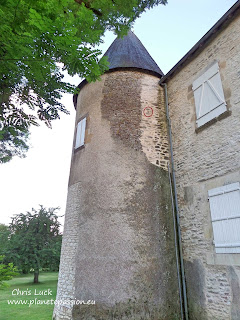This summer we experienced a very long period of
drought and two scorching heat waves which are probably the reason for an
unusual and little known phenomenon to occur in the Vienne
departement along with other parts of west and southwest France
They are normally only seen when they take the
form of a small bell-shaped jellyfish known as a hydromedusa and float near the
surface of the water but this requires a water temperature of at least 25°C and
forms only one part of their interesting lifecycle.
As a jellyfish they are 20–25 mm in diameter,
somewhat flatter than a hemisphere, and very delicate. They have a whorl of up
to 400 tentacles tightly packed around the bell margin. Hanging down from the
center of the inside of the bell is a large stomach structure called a
manubrium, with a mouth-opening and four frilly lips. Food is taken in and
waste expelled through the mouth
opening.
Click photo to enlarge
Craspedacusta
sowerbyi more often exist as microscopic podocysts
(dormant "resting bodies"), frustules (larvae produced asexually by
budding), planulae (larvae produced sexually by the hydromedusae), or as
sessile polyps, which attach to stable surfaces and can form colonies
consisting of two to four individuals and measuring 5 to 8 mm.
This species, originally from China Yangtze River
Basin Europe with aquatic plants
imported for botanical gardens. In the ponds of Kew Gardens London
In France
Chris











































